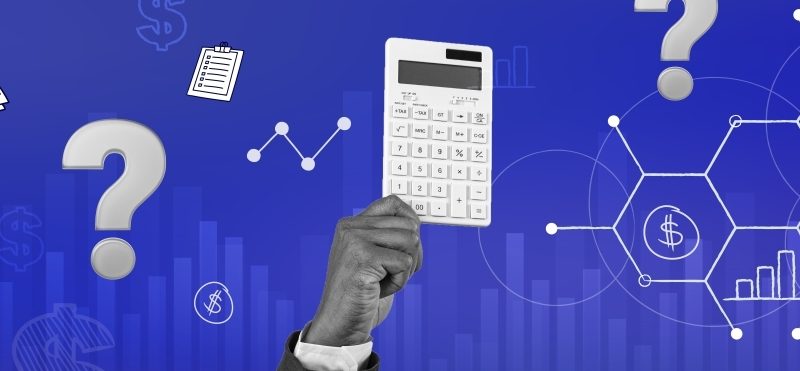In accounting, numbers do more than just rest on pages. They tell a story, reveal patterns, and unveil insights. At the heart of this intricate narrative lies the accounting equation as the blueprint for understanding a company’s financial landscape. It’s the logic behind the creation of financial statements, and particularly the balance sheet, that sheds light on assets, liabilities, and equity, revealing a snapshot of financial health. Investors, creditors, and decision-makers rely on it to make informed choices.
In this article, we’ll look at the accounting equation and explore how it shapes the balance sheet and why keeping it balanced is pivotal.
What is the accounting equation?
Let’s start with the definition. The Accounting equation is a fundamental principle in financial accounting that expresses the relationship between a company’s assets, liabilities, and equity. It can be mathematically represented as follows: Assets = Liabilities + Equity.

In simple terms, the Accounting equation is the financial foundation that keeps track of where money comes from and where it goes in any business or organization.
Now, let’s put this equation into context and see how it plays out in the financial world.
- Assets are the things a company owns that have value. It could be cash, buildings, equipment, inventory, and more. Basically, anything that’s valuable and can be used to generate money.
- Liabilities are the financial obligations a company has. It’s the money the company owes to others, like loans, debts, and unpaid bills.
- Equity Think of equity as the company’s value that belongs to the owners. If you subtract liabilities from assets, what’s left over is the equity – it’s like the leftover ownership slice after you’ve taken care of all the debts.
Now, let’s make it practical. Imagine you’re running a lemonade stand. You started with $100 of your own money (an asset). But you also borrowed $50 from your brother (a liability). So, your equity, or your actual ownership in the lemonade stand, is $50 – that’s the difference between what you own and what you owe.
This equation works like a financial scale. Every time there’s a transaction, like you buying lemons for your stand, the equation needs to balance. If you spend $20 on lemons (reducing your cash asset), your equity drops by $20 as well because your assets are now $80 and your liabilities are still $50.
The beauty of the accounting equation lies in its consistency. Every financial transaction that a business engages in must obey this equation. When you purchase more inventory or equipment, the equation stays balanced by adjusting either the asset or liability side. If you repay a loan, it affects both the liability and equity sides.
Whether you’re operating a small startup or managing a multinational corporation, the accounting equation remains the bedrock of your financial understanding. It ensures that every financial decision and transaction is accounted for, maintaining the delicate equilibrium between what a company owns, what it owes, and what remains for its owners. For a practical illustration of these principles in action, explore the Synder Use Case: American Hospital Supply, showcasing how modern solutions can streamline financial processes.
Expanded accounting – factors influencing the accounting equation
With the accounting equation being the basis, understanding a company’s financial position involves analyzing additional elements that give us a more comprehensive view of a company’s financial landscape – known as expanded accounting.
Imagine our initial equation, but with some extra bells and whistles: Assets = Liabilities + Equity + Revenues – Expenses.

In this upgraded equation, we’re introducing two new players to the game: revenues and expenses.
Revenues are the morsels of financial goodness that a company earns from its operations. Think of them as the rewards for delivering goods, services, or even intellectual property to customers. Revenues swell the coffers and contribute to the company’s financial growth.
Now, every adventure requires resources, and that’s where expenses come in. These are the costs incurred by a company to operate, produce, and deliver its goods or services. From employee salaries to raw materials, expenses account for the resources that are consumed in the pursuit of generating revenue.
Factors influencing the accounting equation
Now, let’s talk about factors influencing the equation.
- Business transactions
Every time a company conducts business – be it selling products, purchasing supplies, or taking out loans – the equation is impacted. Each transaction nudges the equation’s components, making sure it remains in harmony. - Investments and financing
When a company raises capital by issuing shares or borrowing money, it directly influences the equation. These actions change the equity and liability components, redefining the company’s financial structure. - Revenue growth
As revenues surge due to increased sales, the equation shifts to accommodate this growth. This can lead to larger assets, which might require more resources to support. - Cost control
Managing expenses efficiently can impact the equation significantly. Lowering expenses without sacrificing quality can improve a company’s bottom line and its equity portion. - Depreciation and amortization
The wear and tear on assets and the expiration of intangible assets impact the equation. These factors reduce the value of assets over time, affecting both the asset and equity components. - Dividends and retained earnings
When a company distributes profits to its shareholders as dividends, it reduces the equity portion. On the other hand, retaining earnings increases equity, reflecting the company’s reinvestment for growth.
As you can see, these factors are like currents in the financial sea, guiding the ebb and flow of the Accounting Equation’s components. Expanded accounting enriches our understanding by incorporating revenues and expenses, giving us a more holistic perspective on a company’s financial voyage.
Importance of a balanced accounting equation
Now, as you remember, the accounting equation shows the sum of a company’s liabilities and shareholders’ equity being equal to its total assets. However, it’s not just a formula; it’s the financial tightrope that companies walk on. Imagine a circus performer gracefully balancing on a thin wire, defying gravity. Now replace the performer with assets, liabilities, and equity, and you’ve got the accounting equation in action.
So, here’s why the balanced equation is important. A key component of equity is retained earnings, which is critical for understanding a company’s ability to reinvest in its growth. To delve deeper into how these earnings are calculated and their impact on equity, learn How to Calculate Retained Earnings.
Financial accuracy
A balanced equation is a hallmark of financial accuracy. It’s the litmus test that ensures all financial transactions are correctly recorded. If the equation doesn’t add up, it’s like a red flag waving in the wind, signaling potential errors in bookkeeping or financial reporting.
Reliable decision-making
A balanced equation paves the way for sound decision-making. When you have accurate financial information, you can confidently steer your business ship. Whether you’re a manager deciding on investments, an investor evaluating a company, or a lender assessing creditworthiness, the balanced equation provides a reliable foundation for judgment.
Financial health check
Just as a medical check-up reveals your health status, a balanced equation reveals a company’s financial health. It’s the ultimate diagnostic tool that tells you that a company’s assets must be equal to its liabilities and equity. Are assets growing sustainably? Are liabilities manageable? Is equity holding strong? The equation provides answers.
Investor confidence
Investors are the lifeblood of any business, and they seek assurance that their money is well-placed. A balanced equation exudes confidence. It shows that the company is maintaining a robust financial structure and is likely to honor its obligations, making it an attractive prospect for potential investors.
For insights into financial management within this sector, explore Medical Accounting.
Credibility and compliance
In the financial world, credibility is paramount. Regulatory bodies, investors, creditors, and stakeholders rely on financial statements to make informed decisions. A balanced equation lends credibility to these statements, demonstrating that the company adheres to accounting principles and presents information transparently.
Forecasting and planning
Just as a sailor checks the weather before setting sail, a company uses the balanced equation for financial forecasting and planning. By understanding the financial landscape, companies can set realistic goals, allocate resources wisely, and navigate toward future growth.
Strategic growth
When the equation is balanced, a company can pursue strategic growth initiatives. Lenders are more likely to extend credit, suppliers may offer favorable terms, and investors may be enticed to contribute capital – all because the balanced equation signals a stable financial structure.
Stress testing
Imagine the equation as a stress-testing tool. During tough economic times, when revenues shrink or liabilities surge, a balanced equation helps companies evaluate their ability to weather the storm. It guides decisions on cost-cutting, restructuring, or other measures to restore equilibrium.
Accounting equation and the balance sheet
Above, we explored the accounting equation as the fundamental formula that governs a company’s financial transactions. Now, let’s delve into the practical application of this equation through the balance sheet.
Think of the balance sheet as a snapshot of a business’s financial position at a specific point in time. Just like a scientist captures an image to study a subject, a balance sheet captures a business’s financial state to analyze its health. It provides us with a clear and structured picture of what a business owns (its assets), what it owes (its liabilities), and what’s left over for the owners (its equity).
AS you remember, the balance sheet is structured into three main sections:
Assets – anything that the business owns or controls.
Assets are categorized into current assets and non-current (or long-term) assets. Current assets are those expected to be converted into cash or used up within a year, such as cash, accounts receivable, and inventory. Non-current assets are those that will provide value over a longer period, like property, plant, equipment, and intangible assets.
Data for these sections can be found in various accounts within the general ledger, such as Cash, Accounts Receivable, Inventory, and Property.
Liabilities – the obligations or debts the business owes to external parties.
Like assets, liabilities are also divided into current liabilities and non-current liabilities. Current liabilities are debts that are due within a year, such as accounts payable and short-term loans. Non-current liabilities are obligations that extend beyond a year, such as long-term loans and bonds. Entries for these can be located in the Accounts Payable, Loans Payable, and Bonds Payable accounts in the general ledger.
Do you want to learn more about a financial report showing the closing balances of all accounts in the general ledger? Uncover the essence of a trial balance in accounting!
Equity – represents the residual interest in the assets after deducting liabilities.
It’s the owner’s stake in the business. Equity includes contributions from owners (common stock) and retained earnings (accumulated profits minus dividends paid). The Common Stock and Retained Earnings accounts in the general ledger provide the data for this section.
Assessing a business’s financial health using the balance sheet involves a careful analysis of these three sections. Key aspects to consider include:
- Liquidity
By comparing current assets to current liabilities, we can evaluate the company’s ability to meet its short-term obligations. A higher current ratio (current assets divided by current liabilities) indicates better liquidity. - Leverage
Examining the ratio of total liabilities to total assets helps gauge the level of financial risk the business carries. A high ratio might suggest higher risk. - Solvency
Assessing the proportion of equity to total assets indicates how well the company can cover its long-term debts and continue operations. - Asset management
By analyzing the composition of assets, like the ratio of fixed assets to total assets, you can understand how efficiently the business uses its resources.
Explore the world of double entry accounting, its foundational principles and significance in both business and personal finance.
Final words on the accounting equation
To make the long story short, the accounting equation is the guiding force behind a business’s financial activities, shaping the balance sheet into a vivid portrayal of its economic reality. The synergy of assets, liabilities, and equity becomes a numerical story, speaking volumes to those versed in its language.
Much like a scientist examines specimens to understand their essence, financial professionals dissect the balance sheet to gauge a company’s financial well-being. This financial snapshot, governed by the accounting equation, isn’t just a record; it’s a compass for decision-making, a source of investor trust, and a tool for forecasting. As businesses journey through the intricate landscape of finance, the accounting equation and its reflection in the balance sheet illuminate the path towards informed choices and prosperous futures.

.png)




